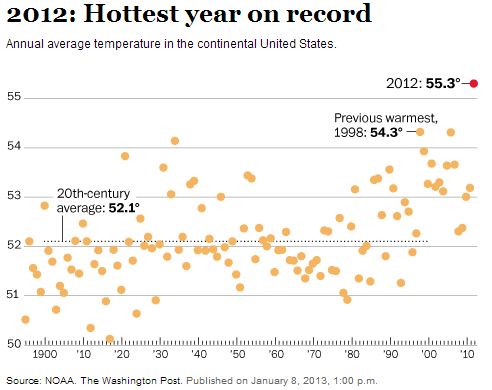The predictions that climate change will result in higher temperatures leading to more wildfires has received a lot of attention in the last few years. But one effect that is under the radar is the effect that higher levels of carbon dioxide in the atmosphere will have on wildfires. Your first thought might be that oxygen is an important leg of the heat/fuel/oxygen fire triangle. Higher levels of CO2 might mean lower levels of oxygen which could affect the rate of spread of a fire.
The amount of CO2 in the atmosphere has received some notice recently as the level has approached 400 parts per million, up nearly 22 points from a decade ago, according to NOAA. Here is an excerpt from an article in the LA Times:
Current ratios of carbon dioxide in the Earth’s atmosphere remain at levels not seen in more than 3 million years, when sea levels were as much as 80 feet higher than current levels.
The article I just read at science.nbcnews.com did not mention if oxygen levels will be lower or what that effect may be. But it does say that higher CO2 levels will promote plant growth even in arid areas, which could mean more fuel available for fires and a higher resistance to control.
Analyzing only three decades of data makes it is difficult to attribute increased foliage to higher CO2 levels, but the 11 percent change that the researchers found is pretty interesting.
Below are some excerpts from the article about research by Randall Donohue, an environmental scientist at Australia’s Commonwealth Scientific and Industrial Research Organization:
Increases in CO2 also fertilize plant growth by making more carbon available to plants and allowing plants to lose less water to the air during the process of photosynthesis. Plants need carbon and water for growth. More of both, means more growth, Donohue explained.
To detect the effect in nature, he and colleagues focused on satellite imagery of warm and dry environments around the world where rainfall — the biggest factor in plant growth — is limited. This makes it easier to see vegetation growth in satellite imagery and account for the effect of rainfall.
The greening effect of increased CO2 is a global phenomenon. It is even seen in areas that are getting drier due to reduced rainfall and warmer temperatures as a result of global climate change, the researchers noted.
“If a brown place is getting drier, we can expect that the ‘browning’ won’t be as severe as it would have been if CO2 levels were unchanged,” Donohue explained. “Similarly, we can expect that the greening that would occur when a dry place gets wetter will be greater now because of higher CO2 levels.”
The implications of the findings are potentially significant, he added. For example, it could change how much carbon is soaked up by plants and the amount of woody fuel available for forest fires.
“It needs to be considered as an important piece of the overall global-change puzzle that we are still trying to figure out.”











